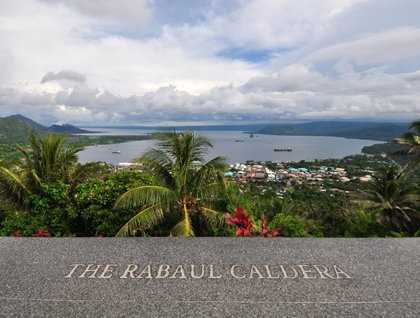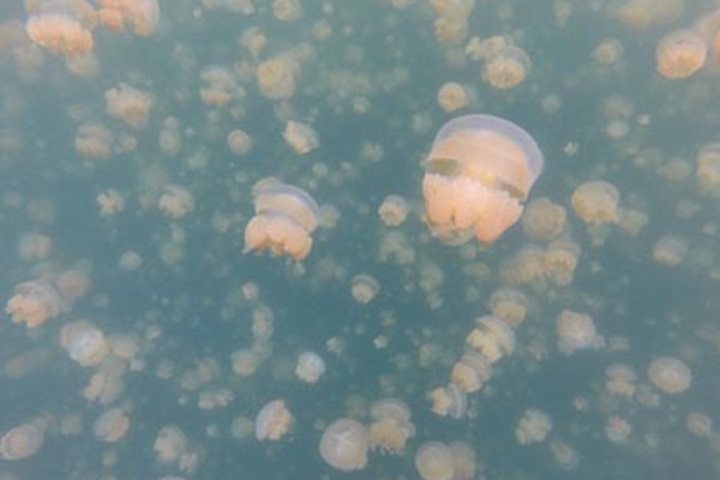After an incredibly thought provoking lecture from Ron Leidich on the War in the Pacific, the National Geographic Orion slipped quietly into Simpson Harbour and alongside the port of Rabaul. The historical township of Rabaul sits on the northeastern side on the island of New Britain within the East New Britain province.
Rabaul sits within an active volcanic caldera, and as we made our way down the gangway we were quickly reminded with many volcanos dotted along the harbour. Mt Tavurvur which in Pigeon means “Hornets’ Nest,” has had a huge impact historically on the local Tolai people. In 1994 Tavurvur violently erupted spilling heavy ash onto the township which in turn demolished most of the eastern side of the town.
Today Tavurvur sits quietly with only the occasional burst of activity that reminds the locals of its sinister past. As we drove around Rabaul we were able to see firsthand the damage that was caused by the 1994 eruption. Visiting the Rabaul Volcanic Observatory, which sits high proudly overlooking the town, was one of the many highlights on our tour. We also visited a number of World War II sites including the Japanese submarine base and Yamamoto’s bunker.
Next stop was the old Rabaul runway which is now under meters of volcanic ash. On arrival we were greeted by the locals keen to sell their beautiful handmade artifacts. It also made for a great photo opportunity with the back drop of Mt Tavurvur in the background.
Our day was far from over, with an opportunity to drive up to the highlands to see the famous Baining fire dance. Watching these fearsome warriors walk across the red hot coals was truly an amazing sight. Traditionally this was a dance to initiate young men into adulthood and what a privilege it was to see for ourselves.







